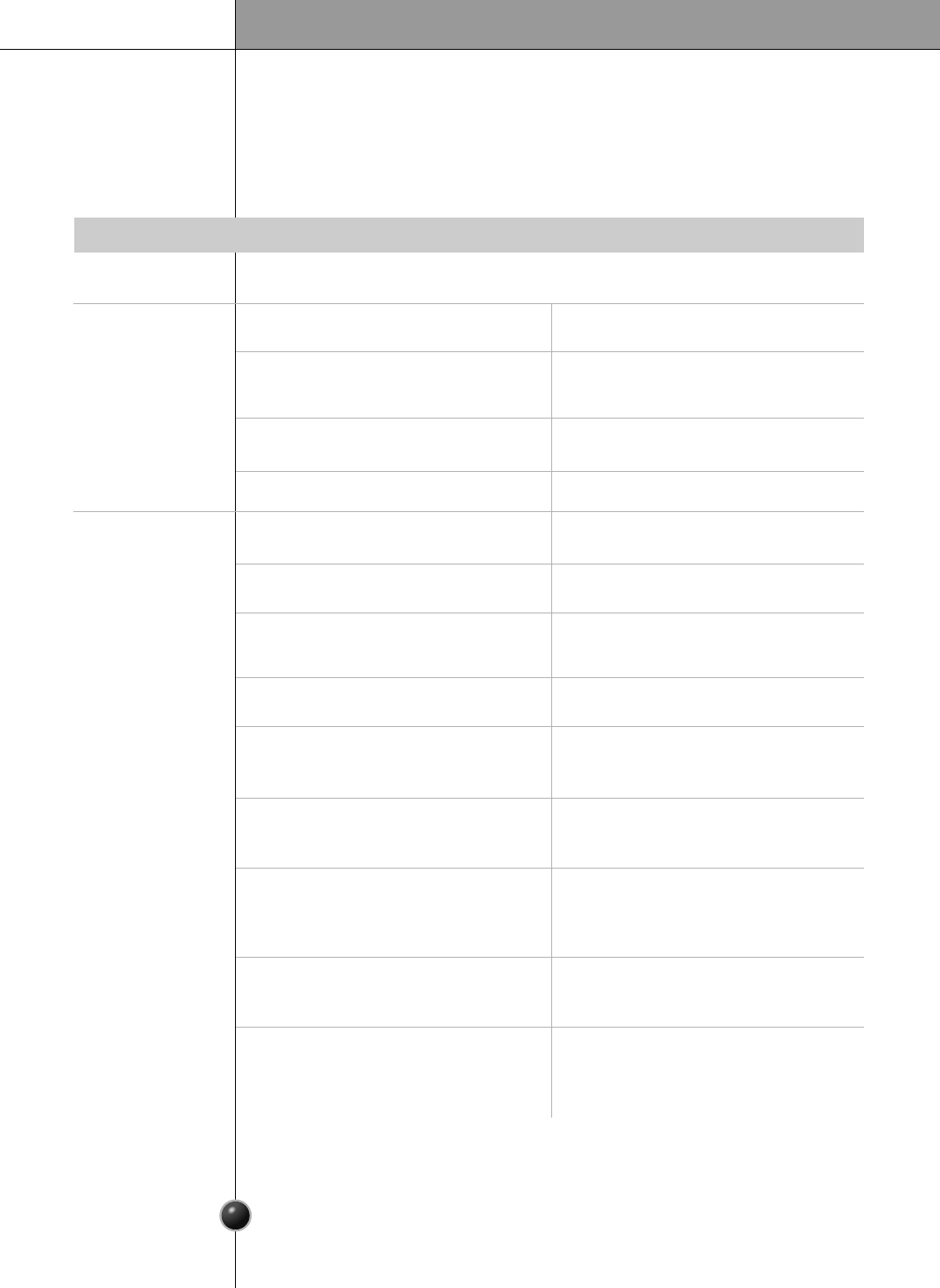
26
Care and Maintenance
Troubleshooting
Before calling for service, review this list. It may save you both time and expense.
This list includes common occurrences that are not the result of defective
workmanship or materials in this appliance.
Possible Cause
Refrigerator control is off.
Refrigerator is in defrost cycle.
Plug at wall outlet is disconnected.
Power outage. Check house lights.
Refrigerator is larger than the previous
one you owned.
Room or outside weather is hot.
Refrigerator has recently been
disconnected for a period of time.
Automatic icemaker is operating.
Large amounts of warm or hot food
may have been stored recently.
Doors are opened too frequently or too
long.
Refrigerator or freezer door may be
slightly open.
Refrigerator control is set too cold.
Refrigerator or freezer gasket is dirty,
worn, cracked, or poorly fitted.
Solution
Set refrigerator control.
This is normal for a fully automatic
defrosting refrigerator. The defrost
cycle occurs periodically.
Make sure plug is tightly pushed into
outlet.
Call local electric company.
This is normal. Larger, more efficient
units run longer.
It is normal for the refrigerator to work
longer under these conditions.
It takes a few hours for the refrigerator
refrigerator to come down to room
temperature completely.
Operation of the ice maker causes the
refrigerator to run slightly longer.
Warm food will cause the refrigerator
to run longer until the desired
temperature is reached.
Warm air entering the refrigerator
causes it to run more. Open the door
less often.
Make sure the refrigerator is level.
Keep food and containers from
blocking the door. See problem section
OPENING/CLOSING of doors, page 11.
Adjust the refrigerator control to a
warmer setting until the refrigerator
temperature is satisfactory.
Clean or change gasket. Leaks in the
door seal will cause the refrigerator to
run longer in order to maintain desired
temperatures.
Normal Operations
Refrigerator
Refrigerator
compressor
does not run.
Refrigerator
runs too much
or too long
Occurrence


















